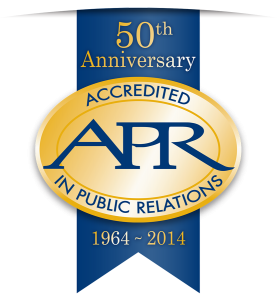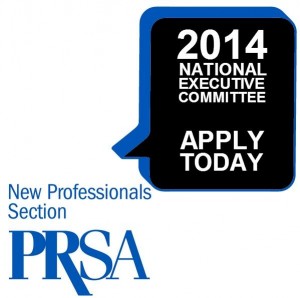Editor’s note: This is part of our monthly #ThrowbackThursday series, which features a prominent, successful PR pro taking a look back and sharing tips from his/her days as a new pro. Thanks for helping us out, Michael!
Ask almost anyone in PRSA who the “go-to” expert is on media relations, and you’re bound to hear Michael Smart’s name mentioned more than once.
 He has the inside scoop on all things media, blogger, and influencer relations, and he shares that expertise through presentations, guest posts, his Inner Circle coaching group, speaking engagements and more.
He has the inside scoop on all things media, blogger, and influencer relations, and he shares that expertise through presentations, guest posts, his Inner Circle coaching group, speaking engagements and more.
Today, he’s also participating in Throwback Thursday to share that expertise with us! So let’s get started.
Question 1: What is one mistake most new PR pros make when first working with media?
Being authentic and real comes naturally to new pros when they communicate through social media or when they email each other. But when they start emailing journalists, it’s like they flip this switch in their heads and turn into stuffy-corporate-robot-mode. They start dropping jargon and business buzzwords every other word. Probably because they have seen bosses and others do the same. Just write to journalists how you actually talk. Well, how you would talk in a professional meeting 🙂 Save the slang, “bros” and “dudes,” and emojis for friends, obviously.
Question 2: As a new PR pro, how did you start building relationships with media?
“Back in my day . . .” ambitious new PR pros used to just call the media. That’s admittedly tougher now. Use social media to get them familiar with you and prove that you have valuable ideas to contribute. But use that as a means to warm them up so that you can actually have a phone conversation. You make such a bigger impact and it lasts so much longer.
Question 3: Many new PR pros – and young journalists – communicate almost entirely via digital. Do you still recommend picking up the phone to follow up on stories?
Oh, I jumped the gun on the phone question. In general, use the phone as much as you can. As for following up specifically, lots of journalists don’t like follow up, and they profess not to like the phone, so that can be a tough combination. HOWEVER, when you have a story you know is good and you know is relevant to a target journalist, and you’ve already emailed her twice, you owe it to yourself to make sure she at least knows about it. So in those special circumstances, yes, definitely call.
Question 4: And, speaking of the digital age, how do you recommend new PR pros interact with journalists on social media?
Generally speaking, journalists say that social media is okay for initial getting-to-know-you, but they still prefer to be pitched via email. That keeps their audiences and competitors from seeing those interactions out in the open. So the best way to interact with journos on social is to react intelligently to their work. Sharing it is a given – to stand out, add a comment or question that demonstrates your knowledge of the space. That’s how move from “random social media reader” in their mind to “potential source.”
Question 5: If you could go back in time and give advice to yourself during your first year in PR, what would you say?
“Younger self, all that stuff you learned in college about communications strategy and planning was great. Hold on to that knowledge for the day when you’re running the show. But right now, your job is to execute. Get the results your boss wants you to get. Build a track record of success. THEN you can start to influence the strategy.”
More about Michael:
Michael Smart is the media pitching coach PR pros turn to when they want to boost their positive media placements. He’s trained more than 6,000 communicators from agencies large and small, from Fortune 50 companies to regional non-profits. He shares lots of tricks, including suggestions for subject lines that get your emails opened, with people who sign up for his weekly media pitching tips emails.

.jpg) “Fake it until you make it” has been my personal and professional motto for quite some time, but after experiencing quite a few PR agencies and finding a niche industry I really enjoy, I no longer feel like I’m faking it. I feel ready to move on from the “new professional” label and onto the next chapter.
“Fake it until you make it” has been my personal and professional motto for quite some time, but after experiencing quite a few PR agencies and finding a niche industry I really enjoy, I no longer feel like I’m faking it. I feel ready to move on from the “new professional” label and onto the next chapter. Although the APR has existed since the Lyndon B. Johnson administration in the 1960’s, many professionals don’t know what it is, how to obtain it or the value it can add to their career. You’re eligible to apply after you’ve worked in the field for five years (suggested), but here are our top eight reasons why you should think about getting your APR as soon as you cross that stage at graduation.
Although the APR has existed since the Lyndon B. Johnson administration in the 1960’s, many professionals don’t know what it is, how to obtain it or the value it can add to their career. You’re eligible to apply after you’ve worked in the field for five years (suggested), but here are our top eight reasons why you should think about getting your APR as soon as you cross that stage at graduation. Brianna Jackson is the Communications Coordinator at The Concilio, a Dallas-area nonprofit. She leads the nonprofit’s media relations, internal and external communications and social media management. She serves as the co-chair of Dallas NuPros, a section of PRSA Dallas for new professionals within the first five years of their career. Tweet her at
Brianna Jackson is the Communications Coordinator at The Concilio, a Dallas-area nonprofit. She leads the nonprofit’s media relations, internal and external communications and social media management. She serves as the co-chair of Dallas NuPros, a section of PRSA Dallas for new professionals within the first five years of their career. Tweet her at  Brooke Traister is an account supervisor at Tucker & Associates, a Dallas-based national public relations firm specializing in travel and tourism. With five years of experience working with consumer, B2B and nonprofit clients, Brooke leads several of the agency’s account teams, spearheads social media initiatives and manages Tucker’s intern program. She also serves on the NuPros committee for PRSA Dallas. Tweet her at
Brooke Traister is an account supervisor at Tucker & Associates, a Dallas-based national public relations firm specializing in travel and tourism. With five years of experience working with consumer, B2B and nonprofit clients, Brooke leads several of the agency’s account teams, spearheads social media initiatives and manages Tucker’s intern program. She also serves on the NuPros committee for PRSA Dallas. Tweet her at 